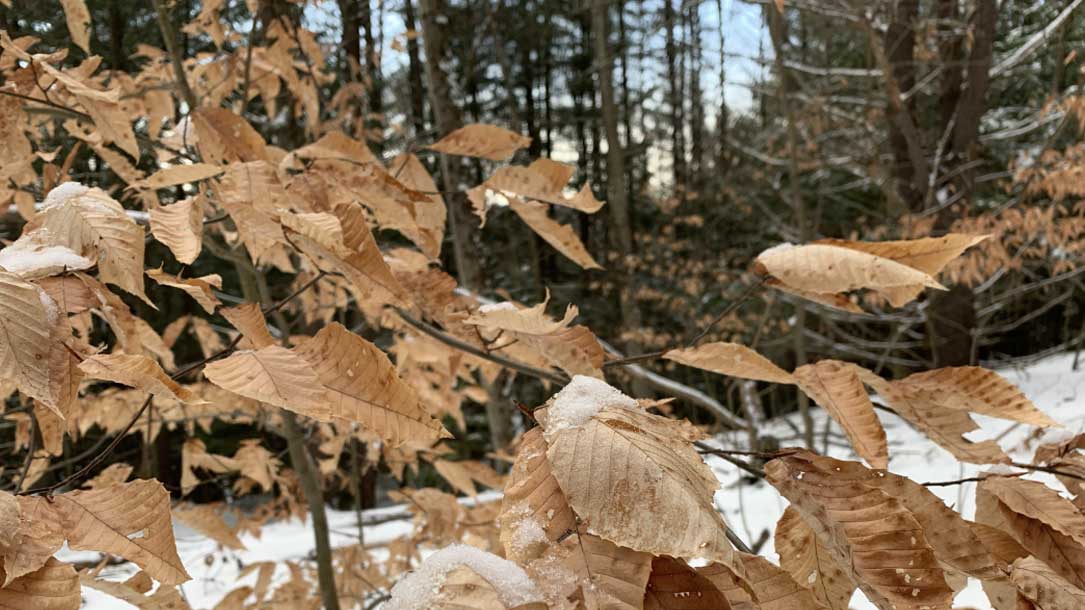Home > Climate News >

Climate change, antibiotics may threaten soil
A study by researchers at the Cary Institute of Ecosystem Studies in Millbrook, New York, has shown that when rising temperatures combine with antibiotic residues expelled by livestock, it degrades soil microbe efficiency, soil resilience to future stress, and its ability to trap carbon…

Research: Declining urban and community tree cover in the United States
Urban forests provide many benefits to society, including moderating climate, reducing building energy use and atmospheric carbon dioxide (CO2), improving air and water quality, mitigating rainfall runoff and flooding, enhancing human health and social well-being and lowering noise impacts (Nowak and Dwyer, 2007)…

Research report: Antibiotics and temperature interact to disrupt soil communities and nutrient cycling
Soils contain immense diversity and support terrestrial ecosystem functions, but they face both anthropogenic and environmental stressors. While many studies have examined the influence of individual stressors on soils, how these perturbations will interact to shape soil communities and their ability to cycle nutrients is far less resolved. Here, we hypothesized that when soils experience multiple stressors their ability to maintain connected and stable communities is disrupted, leading to shifts in C and N pools.

Climate change is here. Nature-based solutions can help.
Openlands works across the Chicago metropolitan region to advance nature-based solutions to climate change, improve the health and well-being of communities, and create a more verdant region for all.
Learn more about [their] work and how you can get involved to help make a more sustainable, equitable region with Openlands…

USDA Forest Service Chief Randy Moore’s statement announcing actions the Forest Service will take to resume its prescribed fire program safely and effectively after completion of its 90-day national review
Washington D.C.,September 8, 2022 — USDA Forest Service Chief Randy Moore released the following statement announcing actions the Forest Service will take to resume its prescribed fire program safely and effectively after completion of its 90-day national review…

Exploring carbon sequestration
“[They] are following the model from other land trusts. There is a cost for land trusts to manage forests for increased carbon sequestration. [They] aren’t a commercial forestry operation and need revenue in order to manage forests.
Carbon offsets and the carbon market can provide resources for land trusts to restore large commercial forest landscapes, and support the ongoing cost of stewardship and restoration that a land trust is responsible for.
Whatcom Land Trust would only take on a carbon sequestration project that supports our mission, improves the forest ecosystem, and sequesters more carbon than it would otherwise…”

Douglas County sheep farm working to restore soil and build community, agrivoltaics
“Co-locating farming and clean energy production on agricultural land creates rural economic resiliency, provides land access for new and underserved farmers, and builds vital agricultural infrastructure. Unlocking these bottlenecks will create food security that allows small farmers to compete in a global extractive market while focusing on restorative farming practices that heal the land”…

North American Grasslands Conservation Act brings restoration partnerships to the prairie
Last summer, Senators Ron Wyden of Oregon and Michael Bennet of Colorado introduced the North American Grasslands Conservation Act, which will provide resources to farmers, ranchers, and Tribes to voluntarily take steps to prevent the loss of grasslands and, when possible, restore them. Now, in the 118th Congress, lawmakers are considering additional updates to this bill and a bipartisan introduction in both the House and Senate is on the horizon.
This bill will create a voluntary, incentive-based grant program that focuses on partnering with private landowners — the stewards of their lands and waters — to conserve and restore grasslands across the country. The availability of grants is designed to be flexible, as the needs of one landowner to conserve grasslands will vary greatly across the nation: restoration of degraded grasslands, mitigating the threats of wildfire and drought, restoring watersheds, and improving the health of rangelands are among the many eligible activities for such grants…

Report: New England forests can do more to combat climate change
“What this report shows is how with even moderate changes in land-use practices we can increase the amount of carbon sequestered and stored in our landscape. To me, as I watch us fail to meet nearly every emissions reduction target, the case for including New England forests in our policy discussions just gets stronger and stronger. These are things we can do today and they come with a range of other benefits that are good for all of society”…

Largest urban forest carbon credit purchase to support conserving land
The largest urban forest carbon credit sale in the nation, as of 2021, will support land conservation in the southwestern Pennsylvania region by Allegheny Land Trust.
This significant purchase increases the capacity of the land trust to conserve and care for more crucial green space in southwestern Pennsylvania…












